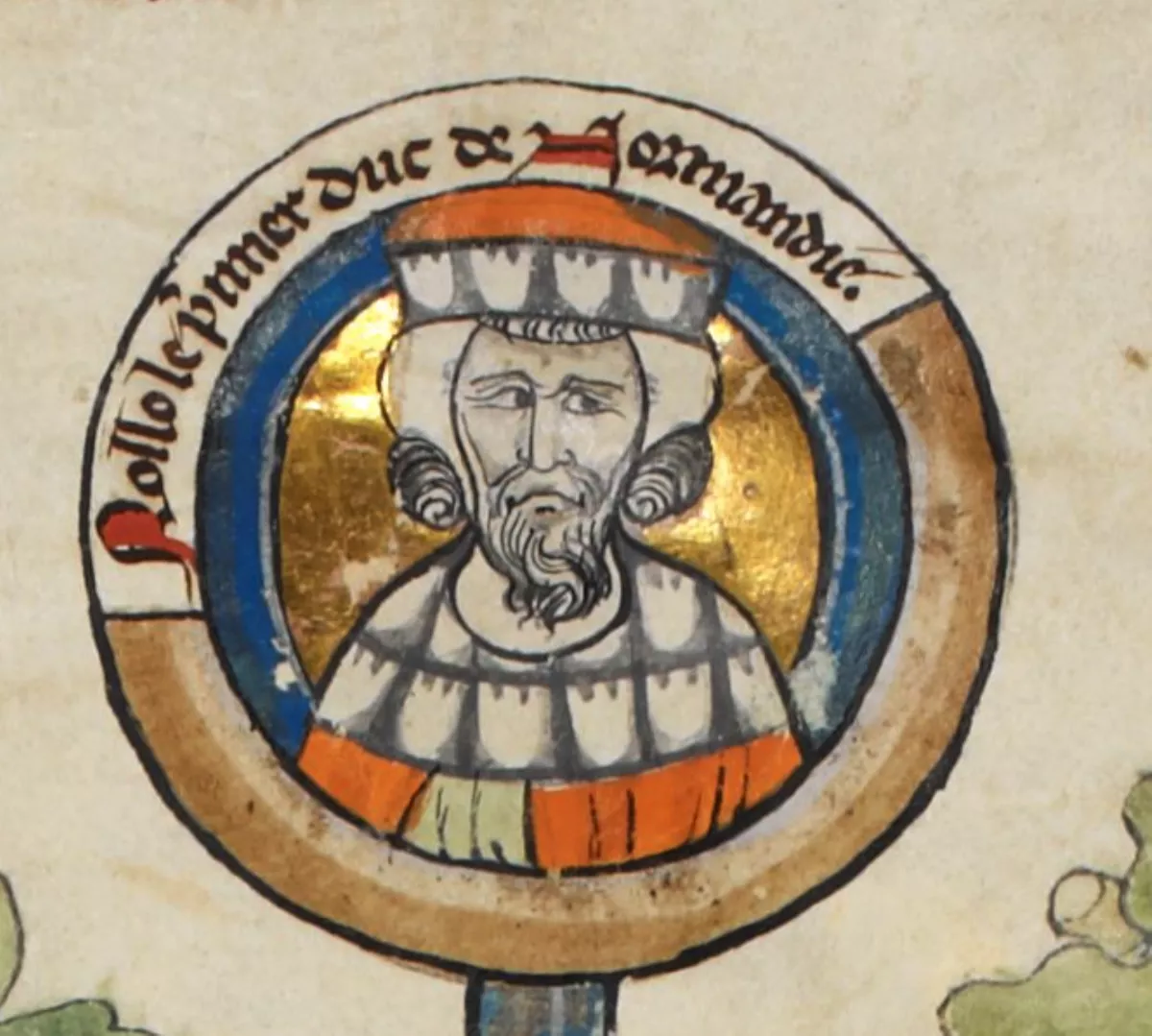 1.
1. Rollo, known with his epithet, Rollo "the Walker", was a Viking who, as Count of Rouen, became the first ruler of Normandy, a region in today's northern France.

 1.
1. Rollo, known with his epithet, Rollo "the Walker", was a Viking who, as Count of Rouen, became the first ruler of Normandy, a region in today's northern France.
Rollo is first recorded in a charter of 918 as the leader of a group of Viking settlers, and he reigned over the region of Normandy until at least 928.
Rollo was succeeded as ruler of the new Duchy of Normandy by his son William Longsword.
The Heimskringla records that Rolf the Ganger went to Normandy and ruled it, so Rollo is generally presumed to be a Latinisation of the Old Norse name Hrolfr, a theory that is supported by the rendition of Hrolfr as Roluo in the Gesta Danorum by Saxo Grammaticus.
The 10th-century French historian Dudo in his Historia Normannorum records that Rollo took the baptismal name Robert.
Rollo was born in the mid-9th century, as his tomb states he was in his eighties when he died in 933; he was almost certainly born in Scandinavia, either in Denmark or Norway.
Benoit repeated the claim that Rollo had been persecuted by a local ruler and had fled from there to "Scanza island", by which Benoit probably means Scania.
Although, scholars have debated this and have said that Rollo did not even arrive in West Francia until after the year 876, making this timeline given in Dudo wrong.
Dudo recorded that when Rollo controlled Bayeux by force, he carried off the beautiful Popa or Poppa, a daughter of Berenger, Count of Rennes.
Rollo married her, and she bore his son and heir, William Longsword.
In return for formal recognition of the lands he possessed, Rollo agreed to be baptised and assisted the king in defending the realm.
On taking his oath of fealty, Rollo divided the lands between the rivers Epte and Risle among his chieftains and settled in the de facto capital of Rouen.
In Dudo's story of Rollo, he had a vision in which he was on a high mountain on a Frankish dwelling, where he washed himself in a stream and rid himself of the diseases with which he was infected.
Rollo then saw birds of all kinds gather around the mountain and wash themselves in this stream, which remained together as a whole group and found twigs to build nests.
The nests were the walls of the city to be rebuilt, and all were to bow down to Rollo to serve him.
Rollo carried this vision with him throughout his journey to Normandy.
Rollo was baptised and spread the word of Christianity to his followers.
Recently, Scholars have said that Rollo's law-making was the cause of the civilization of Normandy, not his actual conversion to Christianity.
Rollo's dynasty survived through a combination of ruthless military action and infighting among the 10th-century Frankish aristocracy, which left them severely weakened and unable to resist the Rouen Vikings' growing determination to stay put.
Rollo left a legacy as the founder of Normandy, and his leadership and integration of Viking settlers into the region transformed it into a stable political entity.
Rollo's lineage played a key role in shaping medieval Europe, as it was William the Conqueror, another descendant of Rollo, who famously led the Norman Conquest of England in 1066.
Rollo's baptism marked a significant point in the assimilation of Viking settlers into Frankish society.
Rollo is the subject of the 17th-century play Rollo Duke of Normandy, known as The Bloody Brother, written by John Fletcher, Philip Massinger, Ben Jonson, and George Chapman.
The similarities to Rollo are slim, as the play draws inspiration from Herodian's account of the rivalry between Emperor Severus's sons, Geta and Antonine.
Rollo's reign, marked by tyranny, ultimately ends when he is killed in retribution for his oppressive rule.
Rollo was staying in West Francia to maintain the Viking's hold on the Seine, as a spot to lead future raids.
Rollo is a character in the video game Assassin's Creed Valhalla.